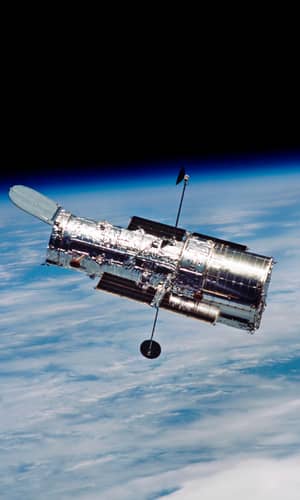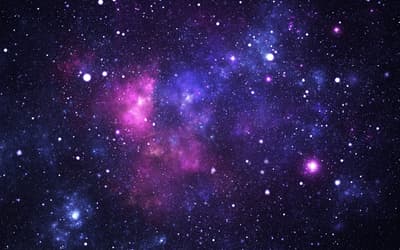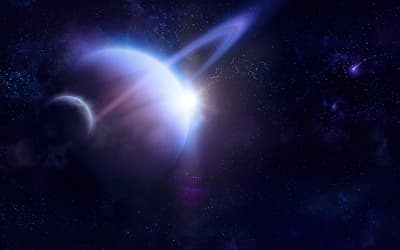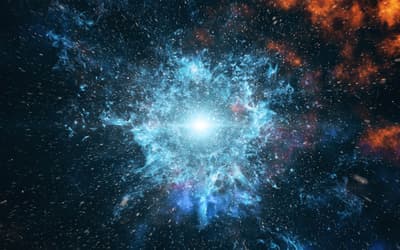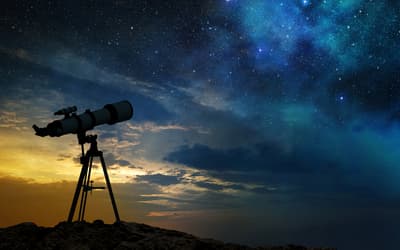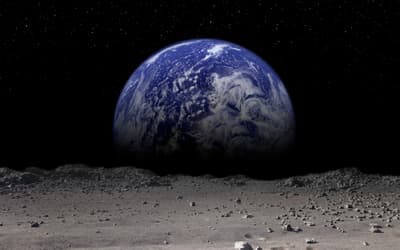The views expressed in this paper are those of the writer(s) and are not necessarily those of the ARJ Editor or Answers in Genesis.
Abstract
Creationists frequently quote Edwin Hubble to the effect that he inserted the cosmological principle into cosmology to avoid stark realties about the universe that his data implied. However, careful consideration of these quotes within their proper context reveals a very different story. Rather than exhibiting bias or desperation, Hubble’s quotes indicate the cautious approach of an observational astronomer. I discourage the further improper use of these quotes.
Keywords: Hubble, cosmology, redshift, cosmological principle, homogeneity, isotropy
Introduction
The cosmological principle is the foundation of modern cosmology. The cosmological principle states that the universe is both homogeneous and isotropic. Homogeneity means that the universe appears the same to all observers, while isotropy means that the universe looks the same in all directions. Of course, the cosmological principle cannot be demonstrated in the general case, which is why it is an assumption. However, the cosmological principle is consistent with a wealth of observational data. The cosmological principle very well may contradict biblical cosmology. For instance, several proposed biblical cosmologies posit that the universe has a center and that the earth is near that center (Faulkner 2016; Hartnett 2003a, 2003b, 2004, 2007, 2015; Humphreys 1994, 2002, 2017). If the universe has a center, then the cosmological principle cannot be true. However, there is yet no clear observational data that contradict the cosmological principle. Until such data are obtained, to the most neutral observer it appears that the rejection of the cosmological principle is the more unwarranted assumption. Of course, other recent creationists disagree with my assessment on this matter. However, it is not my purpose here to discuss this topic further. Rather, I am concerned with the way some creationists of late have used quotes by Edwin Hubble to demonstrate a nearly desperate attitude on Hubble’s part in introducing the cosmological principle.
It has become common in creationist circles to reference quotes by Edwin Hubble that suggest extreme bias on Hubble’s part in introducing the cosmological principle. For instance, Hartnett (2005, 96) has quoted from Hubble thus:
Such a condition would imply that we occupy a unique position in the universe . . . . But the unwelcome supposition of a favoured location must be avoided at all costs. Such a favoured position, of course, is intolerable; moreover, it represents a discrepancy with the theory, because the theory postulates homogeneity.
On the same page, Hartnett also quoted Hubble:
Therefore, in order to restore homogeneity, and to escape the horror of a unique position, the departures from uniformity, which are introduced by the recession factors, must be compensated by the second term representing the effects of spatial curvature.
These quotes certainly suggest an almost desperate attitude on Hubble’s part, that his data had led him to an unpalatable conclusion that we were near the center of the universe, and that to avoid this conclusion, Hubble concocted the cosmological principle and other rescuing devices to avoid this conclusion. These quotes seem to live down to the lowest expectations of many creationists, confirming many of their suspicions about modern cosmology. However, as the saying goes, “When something sounds too good to be true, it probably is too good to be true.” Let us investigate the context of these quotes to determine if they truly represent Hubble’s thoughts.
The source of these quotes come from Hubble’s second book, The Observational Approach to Cosmology, published in 1937. The year before, Hubble had published his first book, The Realm of the Nebulae (Hubble 1936). Both books were based upon different lecture series that Hubble gave. It isn’t clear how much either set of lectures were edited for publication. Hubble’s first book is much longer than his second book. The earlier book is referenced much more than the latter book, and copies of Hubble’s earlier book are more easily found. Both books were based upon Hubble’s work with galaxies and redshifts, though the books read very differently. As the title of Hubble’s earlier book suggests, it gives more details of his work on galaxies (in Hubble’s day, galaxies were still referred to as “nebulae”). Hubble’s latter book also lived up to its title in that it focused on an observer’s view of the cosmological ramifications of Hubble’s work. That distinction is very important.
Hubble’s Methodology
Hubble had published his original work on the relationship between galaxy redshift and distance a little less than a decade prior to his two books (Hubble 1929). In the intervening years, Hubble and his colleagues used the largest telescopes in the world to expand our understanding of galaxies. Many people erroneously assume that Hubble’s summary of cosmology in his second book related to measured redshifts of galaxies. However, the significant part of the discussion in that book centered around measurements of galaxy brightness. There is a very good reason for this. Redshift measurements come from spectroscopy. Because it requires dispersing light into its constituent wavelengths, spectroscopy is a very inefficient use of light. Given the size of telescopes and the sensitivity of photographic emulsions in Hubble’s day, Hubble had pushed spectroscopy to the limits of what they could reveal. However, imaging is a much more efficient use of light, and the brightness of galaxies measured from their images can be very useful in discerning proper cosmology. Astronomers express brightness of a galaxy as its integrated apparent magnitude.1
Hubble had pioneered the use of Cephid variables and the brightest supergiant stars in galaxies to measure the distances of galaxies. Hubble also had noted that the overall brightness of a galaxy could be used to gauge a galaxy’s distance. This is because there is uniformity in the brightness of the largest and brightest galaxies. This is readily seen in clusters of galaxies, groups of hundreds of apparently gravitationally bound galaxies. Within an individual cluster of galaxies, there is obvious uniformity in apparent magnitude among many of its members. The differences in the apparent magnitudes of galaxies from cluster to cluster appeared to be the result of varying distances of the clusters. Thus, large galaxies have about the same absolute magnitude. Knowing that absolute magnitude, one could determine the distance of an individual galaxy by measuring the galaxy’s apparent magnitude. Since there is some variation in the absolute magnitude of galaxies, at best this would be a crude way to measure galaxy distances. Furthermore, this method of distance determination requires the proper calibration of the average absolute magnitude of galaxies. It is clear now that Hubble did not yet have that proper calibration.
However, Hubble found a clever way to avoid these difficulties. Hubble and his collaborators at Mt. Wilson Observatory had taken photographs of many galaxies across the sky, from which they had measured apparent magnitudes. From this data, Hubble had constructed a table of Nm, the number of galaxies per square degree observed to magnitude limit m. Since magnitude increases with decreasing brightness, then Nm increases with increasing m. The use of Nm avoided the two objections just raised. While the brightness of individual galaxies varies, the use of a large sample size cancels out, because in a large sample size one is just as likely to include galaxies that are brighter than average than to include galaxies that are fainter than average. Not having the proper calibration is of no consequence, because recalibrating merely adjusts the scale, not the conclusions with regards to cosmology.
There was one other necessary correction. Proctor (1878, 44–45) is generally credited with the discovery of the zone of avoidance, the region along the Milky Way plane where few spiral nebulae (now called galaxies) are found. The reason for this zone of avoidance was not understood until about 1930. It is due to vast clouds of dust along the Milky Way plane that scatter light, thus rendering galaxies that lie close to the plane of the Milky Way very faint or altogether unobservable. Astronomers define galactic latitude using the plane of the Milky Way as the reference circle. The amount of extinction (how much light is dimmed) is a function of galactic latitude. Since the positions of all the galaxies at Hubble’s disposal were well known, Hubble was able to correct measured magnitudes for extinction.
Hubble’s Conclusions About Homogeneity and Expansion2
From his tabulated values of Nm, Hubble concluded:
The homogeneity indicated by the reconnaissance, even as a rough approximation, is very significant. The uniform distribution extends out to the limits of our telescopes. There is no trace of a physical boundary, no evidence of a super-system of nebulae isolated in a larger world. As far as the observations can be interpreted, the realm of the nebulae may be the universe itself, and the observable region may be a fair sample.
This is very different from what the above quotes supposedly attributed to Hubble suggest. Hubble went on to say:
Let us, then, follow the principle of tie uniformity of nature and accept the observable region as a fair sample of the universe. The assumption will serve as a reasonable working hypothesis until it leads to contradictions. Then it can be revised or replaced to conform with our new information.
Again, this does not jibe with the attitude implied by the quotes attributed to Hubble above.
Hubble then discussed redshifts. Based upon his 1929 paper, Hubble deduced his law of redshifts, z = kr, where z is redshift, r is distance, and k is some constant. Of course, this law of redshift is now known as the Hubble relation, or Hubble law,3 with the constant of proportionality called the Hubble constant. Of redshifts, Hubble wrote in his 1937 book,
To anticipate, the investigations lead to alternative pictures, depending upon the alternative possible interpretations of red-shifts. If red-shifts are the familiar velocity-shifts, systematic variations do exist in the observable region, and they suggest an expanding universe that is finite, small, and young. On the other hand, if red-shifts are evidence of some unknown principle of nature, which does not involve actual motion, then variations are not appreciable in our sample, and the observable region is an insignificant fraction of the universe as a whole. Thus, in a certain sense, we again face a choice between a small finite universe and a universe indefinitely large plus a new principle of nature.
Apparently, Hubble was aware that in 1931 George LeMaître had interpreted his law of redshifts as indicating the universe had a beginning in the finite past. Hubble’s caution here is indicative of the thinking of many other astronomers at the time. They were steeped in the idea that the universe was eternal, so they were repulsed by the thought that expansion led to a finite age for the universe. Hence, Hubble seriously considered other options. The situation would change a decade later with publication of the steady state model (Bondi and Gold 1948; Hoyle 1948), for it offered the possibility of an eternally expanding universe. This discomfiture probably explains why, for the rest of his life, Hubble harbored doubts about the expansion explanation for the Hubble relation. But at least within An Observational Approach to Cosmology, Hubble provisionally accepted expansion as the best explanation, for he further wrote:
When first observed the red-shifts were immediately attributed to radial motion away from the observer, to recession of the nebulae. This interpretation still remains the only permissible explanation that is known. It is true that other ways are known by which red-shifts might be produced, but in each case they would be accompanied by other phenomena which would be conspicuous and, actually, are not found. We may state with some confidence that redshifts are the familiar velocity-shifts, or else they represent some unrecognized principle of nature. We cannot assume that our knowledge of physical principles is yet complete; nevertheless, we should not replace a known, familiar principle by an ad hoc explanation unless we are forced to that step by actual observations.
Most of the theoretical investigators adopt this point of view, and accept without question the interpretation of red-shifts as velocity-shifts. They are fully justified in their position until evidence to the contrary is forthcoming. But these lectures will present a remarkable situation. The familiar interpretation of red-shifts seems to imply a strange and dubious universe, very young and very small. On the other hand, the plausible and, in a sense, familiar conception of a universe extending indefinitely in space and time, a universe vastly greater than the observable region, seems to imply that red-shifts are not primarily velocity-shifts.
Clearly, Hubble saw conflict between his great discovery of the Hubble law and his preferred view of an eternal universe. Hubble continued:
When Slipher, in his great pioneering work, assembled the first considerable lists of red-shifts, the observations were necessarily restricted to the brighter, nearer nebulae. Consequently, the shifts were moderately small (less than 1 per cent.), and they were accepted without question as the familiar velocity-shifts. Attempts were immediately made to study the motions of the nebulae by the same methods used in the study of stellar motions. But later, after the ‘velocity-distance relation’ had been formulated, and Humason’s observations of faint nebulae began to accumulate, the earlier, complete certainty of the interpretation began to fade.
And Hubble further said:
The observer seems to face a dilemma. The familiar interpretation of red-shifts leads to rather startling conclusions. These conclusions can be avoided by an assumption which sounds plausible but which finds no place in our present body of knowledge. The situation can be described as follows. Red-shifts are produced either in the nebulae, where the light originates, or in the intervening space through which the light travels. If the source is in the nebulae, then red-shifts are probably velocity-shifts and the nebulae are receding. If the source lies in the intervening space, the explanation of red-shifts is unknown but the nebulae are sensibly stationary.
Therefore, rather than boldly asserting the expansion of the universe, Hubble clearly was troubled by its implications.
Hubble’s Quotes in Context
What I have quoted from Hubble so far merely provides background of what Hubble was thinking. What about the two quotes attributed to Hubble by Hartnett in the Introduction, the central issue of this paper? Notice that the first quote consists of three sentences separated by ellipses. The ellipses indicate that additional text was omitted. Indeed, this is the case, as the first two sentences appear in separate paragraphs with a paragraph in between, while the third sentence appears in an entirely different section of The Observational Approach to Cosmology. Furthermore, that third sentence, along with the second Hubble quote by Harnett constitute much of a paragraph in that section. Hartnett’s separation of those lines is misleading.
What is the context of the first two sentences? They appear under the heading “The Law of Nebular Distribution when Red-Shifts are not interpreted as Velocity-Shifts.” Therefore, the context is under the assumption that the universe is not expanding. Hubble pointed out that his data showed that the galaxies are uniformly distributed in space. He then stated:
The assumption of uniformity has much to be said in its favour. If the distribution were not uniform, it would either increase with distance, or decrease. But we would not expect to find a distribution in which the density increases with distance, symmetrically in all directions. Such a condition would imply that we occupy a unique position in the universe, analogous, in a sense, to the ancient conception of a central earth. The hypothesis cannot be disproved but it is unwelcome and would be accepted only as a last resort in order to save the phenomena. Therefore, we disregard this possibility and consider the alternative, namely, a distribution which thins out with distance [emphasis added to indicate the portion of the paragraph quoted by Hartnett].
Notice that Hubble was not concerned with the clumping of matter in the universe, for clumping of matter smooths out on large scales. Rather, Hubble was concerned with the possibility of an increase or decrease in matter distribution as distance increased. Here Hubble was most concerned about the galaxy density increasing with increasing distance, but he seemed unconcerned about the opposite possibility, that galaxy density might decrease with increasing distance. And why was Hubble concerned with these two possibilities at all, since his data indicated that neither was the case?
In the next paragraph, Hubble explained that an observed thinning of galaxies with increasing distance might be due to two possible mechanisms other than a true thinning of galaxy density with increasing distance. One possible mechanism was dimming of light due to an intergalactic medium just as dust in the Milky Way dimmed light, producing the zone of avoidance. Since the data showed no thinning in galaxy density with increasing distance, Hubble was confident that there was no intergalactic medium capable of doing this. However, being a very careful scientist, Hubble could not definitely rule out the possibility that an intergalactic medium might dim the light of galaxies so that it exactly compensated and hence masked a true increase in galaxy density with increasing distance. It is in this spirit that Hubble made the above statement that some people find a shocking admission when taken out of context. Hubble continued in the next paragraph, where the second sentence of the supposed shocking quote appears:
Both explanations seem plausible, but neither is permitted by the observations. The apparent departures from uniformity in the World Picture are fully compensated by the minimum possible corrections for redshifts on any interpretation. No margin is left for a thinning out. The true distribution must either be uniform or increase outward, leaving the observer in a unique position. But the unwelcome supposition of a favoured location must be avoided at all costs. Therefore, we accept the uniform distribution, and assume that space is sensibly transparent. Then the data from the surveys are simply and fully accounted for by the energy corrections alone—without the additional postulate of an expanding universe [emphases again added to indicate the sentence quoted by Hartnett].
Hence, in context, these first two sentences quoted from Hubble are not bold assertions at all. Rather, Hubble was considering a possibility, a possibility that he found wanting.
What of the third sentence? As I previously stated, this sentence, along with the second portion quoted by Hartnett are from a paragraph in an entirely different section of Hubble’s book. That paragraph appears under the heading of “Spatial Curvature.” That section is preceded by a section entitled “Comparison of Observations with Theory.” Here is that section’s text in its entirety:
Now let us return to the surveys, and reduce them all to the epoch, now, in accordance with the principles of relativistic cosmology. We wish to know the relative numbers of nebulae which an observer, in an expanding universe, would count to successive limits of apparent faintness. The problem is intricate but it has been thoroughly investigated, and the necessary formula is available in quite simple terms. Actually, the expression is just that previously derived for uniform distribution in a stationary universe, plus two extra terms. One of the terms represents the recession factor, the other represents effects of spatial curvature.
If the use of a logarithm is permitted, the situation may be clearly represented by a pair of equations. If nebulae are uniformly distributed through a non-expanding universe in which red-shifts are not primarily velocity-shifts, then the numbers should be proportional to the volumes, and the surveys should conform (and actually do conform) with the relation
(1)
where mc is the limiting faintness expressed as a magnitude, corrected for local obscuration and for the energy-effects required by the mere presence of redshifts. The corresponding relation for a homogeneous, expanding universe, obeying the relativistic laws of gravitation, is
(2)
where dλ/λ is the recession factor and Cv is the effect of spatial curvature. We wish to know whether or not the surveys can be fitted into the latter expression. If both of the extra terms (for recession and for curvature) were absent, the surveys would clearly fit the formula because the situation would be precisely that in a stationary universe. Now suppose we introduce only one of the extra terms, namely, the recession factor. In this way we pass from a stationary universe to an expanding universe with negligible curvature, but we destroy the agreement with the observations. The distribution is no longer uniform. The recession factors introduce departures from uniformity in the law of distribution, just as they introduced departures from linearity in the law of redshifts.
Notice what Hubble is saying here. The first equation is the fit to his data. The second equation is the prediction of general relativity applied to the universe. The two match only if CV = Δλ/λ. Remember that the title of Hubble’s book is An Observational Approach to Cosmology. Speaking from an observer’s viewpoint, Hubble asked some questions. He pointed out that if both CV and Δλ/λ were zero, then his data reduced to a static universe. Hubble then asked what if we consider only one of the terms, Δλ/λ, which is the interpretation of redshifts as indicative of motion (a non-static universe). But that results in a contradiction with observation, unless we also consider curvature, CV.
It is this context that Hubble began his section entitled “Spatial Curvature”:
The departures from uniformity are positive; the numbers of nebulae increase faster than the volume of space through which they are scattered. Thus the density of the nebular distribution increases outwards, symmetrically in all directions, leaving the observer in a unique position. Such a favoured position, of course, is intolerable; moreover, it represents a discrepancy with the theory, because the theory postulates homogeneity. Therefore, in order to restore homogeneity, and to escape the horror of a unique position, the departures from uniformity, which are introduced by the recession factors, must be compensated by the second term representing effects of spatial curvature. There seems to be no other escape. Observations demonstrate that
(3)
Relativistic cosmology requires that
(4)
Therefore,
(5)
The curvature of space is demonstrated and measured by the postulated recession of the nebulae [again with emphasis highlighting the portion quoted by Hartnett].
Again, taken in context, the quote by Hubble does not indicate a desperate attempt to salvage theory or to impose unwarranted assumptions onto the universe. Rather, they are the words of a very careful scientist trying to assess the current state of cosmology of his time from the viewpoint of an observer rather than a theoretician. Indeed, that spirit is captured well by the remainder of the last paragraph started above:
To the observer the procedure seems artificial. He has counted the nebulae to various limits, applied only the corrections that are necessarily required (energy-corrections), and derived the quite plausible result of uniform distribution. Now, in testing the relativistic theory, he introduces a new postulate, namely, recession of the nebulae, and it leads to discrepancies. Therefore, he adds still another postulate, namely, spatial curvature, in order to compensate the discrepancies introduced by the first. The accumulation of assumptions is uneconomical, and the justification must be sought in the general background of knowledge. The outstanding argument is the fact that velocity-shifts remain the only permissible interpretation of red-shifts that is known at the present time.
Clearly, this is from the perspective of an observer. Hubble concluded his short book with a brief discussion of the expanding universe model as then known. He expressed disappointment that the data implied a relatively small radius for the curvature of the universe, 470 million light years, and an age for the universe of only 1.86 billion years, less than the estimated age of the earth at the time. Some of this has been cleared up by changes in the expansion rate of the universe. Hubble initial measurement of the Hubble constant was over 500 km/s/Mpc. Over the years, the value of the Hubble constant declined to about 50 km/s/Mpc before rising again in the currently accepted value of about 70 km/s/Mpc. Lower values for the Hubble constant translate into a much larger, older universe.
Conclusion
Hartnett has misinterpreted Hubble’s quotes. Part of the problem may be that creationists have misunderstood the viewpoint of Hubble’s latter book, An Observational Approach to Cosmology. It reads very differently from Hubble’s earlier book from just a year before. In his latter book, Hubble attempted to convey his work from the perspective of an observational astronomer. When read apart from their context, the oft-quoted words of Hubble sound like a damning admission of extreme and even desperate bias. But when considered in context, Hubble’s words amount to an honest and open exploration of many possibilities. I discourage creationists from using these quotes from Hubble any other way.
References
Bondi, H., and T. Gold. 1948. “The Steady-State Theory of the Expanding Universe.” Monthly Notices of the Royal Astronomical Society 108, no. 3: 252–270.
Faulkner, Danny R. 2013. “Astronomical Distance Determination Methods and the Light Travel Time Problem.” Answers Research Journal 6: 211–229. https://answersingenesis.org/astronomy/starlight/astronomical-distance-determination-methods-and-the-light-travel-time-problem/.
Faulkner, Danny R. 2016. “Thoughts on the rāqîa‘ and a Possible Explanation for the Cosmic Microwave Background.” Answers Research Journal 9: 57–65.
Hartnett, John G. 2003a. “A New Cosmology: Solution to the Starlight Travel Time Problem.” TJ 17, no. 2: 98–102.
Hartnett, John G. 2003b. “Look-Back Time in our Galactic Neighbourhood Leads to a New Cosmogony.” TJ 17, no. 1: 73–79.
Hartnett, John. 2004. “New Evidence: We Really Are At the Centre of the Universe.” TJ 18, no. 1: 9.
Hartnett, John. 2005. “Cosmological Expansion in a Creationist Cosmology.” TJ 19, no. 3: 96–102.
Hartnett, John. 2007. Starlight, Time, and the New Physics: How We Can See Starlight in our Young Universe. Powder Springs, Georgia: Creation Book Publishers.
Hartnett, John G. 2015. “A Biblical Creationist Cosmogony.” Answers Research Journal 8:13–20. https://answersingenesis.org/astronomy/starlight/a-biblical-creationist-cosmogony/.
Hoyle, F. 1948. “A New Model of the Expanding Universe.” Monthly Notices of the Royal Astronomical Society 108, no. 5: 372–382.
Hubble, Edwin. 1929. “A Relation Between Distance and Radial Velocity Among Extra-Galactic Nebulae.” Proceedings of the National Academy of Sciences of the USA 15, no. 3: 168–173.
Hubble, Edwin. 1936. The Realm of the Nebulae. New Haven, Connecticut: Yale University Press.
Hubble, Edwin. 1937. The Observational Approach to Cosmology. Oxford, United Kingdom: Clarendon Press. https://ned.ipac.caltech.edu/level5/Sept04/Hubble/paper.pdf.
Humphreys, D. Russell. 1994. “A Biblical Basis for a Creationist Cosmology.” In Proceedings of the Third International Conference on Creationism, edited by R. E. Walsh, 255–266. Pittsburgh, Pennsylvania: Creation Science Fellowship.
Humphreys, D. Russell. 2002. “Our Galaxy is the Centre of the Universe, ‘Quantized’ Red Shifts Show.” TJ 16, no. 2(August): 95.
Humphreys, D. Russell. 2017. “Biblical Evidence for Time Dilation in the Cosmos.” Creation Research Society Quarterly 53, no. 4 (Spring): 297–305.
Proctor, Richard Anthony. 1878. The Universe of Stars: Presenting Researches into and New Views Respecting the Constitution of the Heavens. London, United Kingdom: Longmans, Green, and Co.
